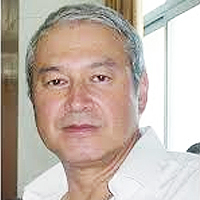Phytochemicals candidates as promising preventives and/or curatives for COVID-19 Infection: A brief review
Published on: 23rd March, 2021
OCLC Number/Unique Identifier: 9272357985
The outbreak of new coronavirus acute respiratory disease (SARS-CoV-2) has been a major global challenge for the scientific community to save humanity. While, the unviability of the vaccine keeps most classes of society, especially African countries, suffer from the healthcare problem. Conventional medicine plants become the alternative method for the therapeutic because it contains valuable bioactive compounds. This brief review devoted the importance of medicinal plants such as Citrus, olive, garlic, ginger, green tea, woad, broad-leaf privet, Japanese torreya, and saffron crocus, by their antiviral effects (anti-SARS coronavirus, anti-HSV, and anti-HIV diseases) and their promising uses as probable boosters of the immune and anti-inflammatory response from SARS-CoV-2 infection. Based on scientific reports, bioactive compounds could inhibit 3-chymotrypsin-like cysteine protease and human protein ACE2, where these facts can be attractive to develop effective drugs.
Control of phytopathogenic microorganisms of post-harvest in tomato (Lycopersicon esculentum Mill.) with the use of citrus extract
Published on: 30th March, 2018
OCLC Number/Unique Identifier: 7671836913
Diseases are a major cause of post-harvest losses depending on season, region and management practices. Chemical control is the most used but with serious consequences for human health and the environment. This forces us to carry out more exhaustive studies on botanical products. The general objective of the present study was to evaluate the effect of citrus extracts for the control of pathogens that cause post-harvest diseases in tomato fruit. The product to be evaluated is of botanical origin from citrus extracts. Doses were evaluated (0, 666, 1000, 2000, 4000, 8000 ppm). The treatments were located at a temperature of 25°C±2 and 45% relative humidity (rH). The design used corresponded to a completely random design. The least significant difference was estimated by Tukey Multiple Range test at P=0.05. The statistical tests were performed through the SAS computer program. The results indicate that the pathogens detected and identified correspond to Alternaria tenuissima; Botrytis cinerea; Cladosporium fulvum; Colletotrichum coccodes; Fusarium oxysporum; Geotrichum candidum; Rhizopus stolonifer and Stemphylium macrosporoideum. Our conclusion is that the efficient doses correspond to 666, 2000 and 8000 ppm. With the application of citrus extracts, the damage percentage of tomato fruit was reduced in relation to the control treatments. Based on the results with the application of citrus extracts, the shelf life of the tomato was lengthened.
Nematicidal effect of abamectin, boron, chitosan, hydrogen peroxide and Bacillus thuringiensis against citrus nematode on Valencia orang
Published on: 12th December, 2019
OCLC Number/Unique Identifier: 8495684933
The nematicidal efficacy of abamectin, boron, chitosan, hydrogen peroxide, Bacillus thuringiensis and oxamyl 24% SL against citrus nematode, Tylenchulus semipenetrans were examined on Valencia orange trees under field condition for two successive seasons (2017 and 2018). The experiment was conducted in a Valencia orange orchard infested with citrus nematode at Nubaria, El-Behera governorate, Egypt. The obtained results showed that all the tested treatments reduced nematode final population ((Pf) and reproduction factor (Rf) compared with that obtained from the untreated trees. The highest percentages of Pf reductions (74.5-83.4 %) and (70%-82%) were recorded with oxamyl, boron, abamectin, chitosan and H2O2 in the 1st and the 2nd tested seasons, respectively. Whereas, B. thuringiensis had the least nematode Pf reduction with 60.7 and 55.8% in the 1st and 2nd seasons, respectively. Additionally, all treatments significantly improved orange yield (30.9-83.2% increase), physical fruit parameters and orange juice properties. The highest orange yield increase (83.2%) was recorded with boron treatment followed by oxamyl (70.3%). Also, boron increased total soluble solids (TSS) by 13.6%, volume of orange juice (36.4%) and vitamin C (19.7%) and decreased juice acidity (A) by (16.7%). It is concluded that abamectin, boron and the other tested compounds have potential as non-chemical control strategy tools in managing the citrus nematode. These bioagents reduced the amount of traditional chemical nematicides and are considered to be environmentally safe.
Gene polymorphisms CVPDr on some plants citrus in Bali Island
Published on: 7th May, 2020
OCLC Number/Unique Identifier: 8604563550
Citrus Vein Phloem Degeneration (CVPD) is the main disease of citrus plants in Indonesia. This disease is caused by Gram negative bacteria, Candidatus Liberibacter asiaticus. Almost all citrus plants are susceptible to this disease and only a few citrus plants such as seedless lime (Citrus aurantiifolia var. Seedles) and kinkit citrus (Triphacia trifoliate) are tolerant. Both of these citrus plants store DNA fragments of CVPDr which are considered as tolerant factors (841 bp). However, this study found that CVPDr DNA fragments were also found in citrus plants susceptible to CVPD disease. This research aims to study DNA polymorphisms from CVPDr DNA fragments in citrus plants on the island of Bali. The PCR test showed T. trifoliate and C. aurantifolia that are resistant to CVPD and Pylogenically are in the same group as C. nobilis var Buleleng, C. reticulate var. Slayer Buleleng, and C. amblicarpa. On the other hand, citrus plants susceptible to CVPD are in a different group. There are two types of citrus plants not containing CVPDr DNA fragments, namely C. nobilis var. Petang and M. paniculata L. These results indicate that the CVPDr DNA fragment polymorphism is a factor tolerant to CVPD disease.
Pathogen identification and control of sooty spot caused by Cladosporium ramotenellum, appearing on fresh easy peeler mandarins from Perú
Published on: 9th June, 2021
OCLC Number/Unique Identifier: 9077092985
During the 2018 season, superficial dry and firm black spots, where sometimes an aerial mycelium developed, appeared on the rind of easy peeler mandarins causing high economic losses in fresh citrus exports from Perú. In this work, we have identified the causal agent, a species of Cladosporium not previously reported as a citrus pathogen. The pathogen was isolated from rind lesions of affected fruit and was identified by sequencing as Cladosporium ramotenellum; and fulfilment of Koch postulates was proven. This species was present on the surface of immature fruit in the groves, indicating that the infection is likely initiated before harvest. Cladosporium ramotenellum is resistant to the postharvest fungicides imazalil, pyrimethanil, and thiabendazole, but sensitive to propiconazole, prochloraz, and ortho-phenylphenol. We designed a postharvest industrial treatment to decrease the Cladosporium sp. load on the fruit surface that limited the incidence of infection and reduced the postharvest losses caused by the fungus. Although this species is quite ubiquitous, this is the first description of C. ramotenellum causing decay of citrus fruit, being the symptoms of this disease similar to the ones described previously and caused by Cladosporium cladosporoides in cv. Satsuma mandarins from Japan.
Effect of chitosan and silicon oxide treatments on postharvest Valencia Late (Citrus × sinensis) fruits
Published on: 6th October, 2021
OCLC Number/Unique Identifier: 9305369016
The efficacy of chitosan and silicon oxide to prevent postharvest weight loss and fungi infection in 'Valencia Late' oranges was tested. Three silicon oxide concentrations (0.1%, 0.2%, 1%) were applied as preharvest treatments. Chitosan treatments were performed at the same concentrations in postharvest fruit. Preharvest applications were carried out by tractor spraying, while fruit were submerged for 30 seconds in baths with the chitosan concentrations in the postharvest applications. In both cases, a positive control (water treatment) and negative control (fungicide) were included. Treated fruit were stored in a chamber to simulate commercial storage conditions (4 ºC, 90% RH) for 9 weeks. After this time, the weight loss and damage caused by fungi due to natural infection were evaluated. Both silicon oxide and chitosan applications were effective in controlling natural infection by Penicillium species but had no positive effect on weight loss.
Green Synthesis of Citrus sinensis Peel (Orange Peel) Extract Silver Nanoparticle and its Various Pharmacological Activities
Published on: 28th March, 2025
Citrus sinensis is a rich source of bioactive compounds and has attracted attention due to its medicinal benefits. Historically regarded as agricultural waste, orange peel is rich in flavonoids, polyphenols, tannins, and essential oils with antibacterial, anti-inflammatory, and antioxidant qualities. The phytochemicals in Citrus sinensis peel were used as natural reducing and stabilizing agents in the green synthesis method used in this work to create silver nanoparticles (AgNPs). This method is an environmentally friendly alternative to conventional nanoparticle production, eliminating the need for hazardous chemicals. Based on the study’s results, green-synthesized silver nanoparticles derived from Citrus sinensis peel extract offer a sustainable and biocompatible substitute for biomedical applications. The pharmaceutical and healthcare industries may find therapeutic uses for them due to their exceptional antibacterial, antioxidant, and anticancer properties.
















